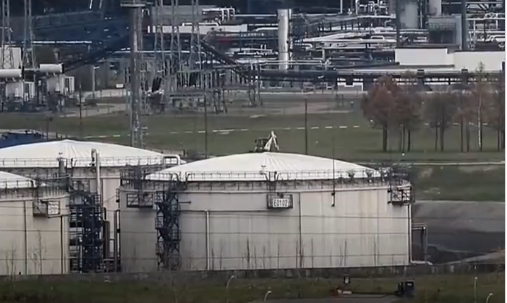With Saudi Arabia making many moves to curtail production and drive up prices, it looks as though prices may be on the rise yet again.
Oil prices remained stable on Tuesday, hovering close to their highest levels in two months, driven by anticipated demand surges in the summer driving season and potential supply disruptions due to Hurricane Beryl.
Brent crude futures experienced a slight increase, rising 51 cents or 0.59% to reach $87.11 a barrel by mid-morning. Similarly, U.S. West Texas Intermediate (WTI) crude also saw a gain of 51 cents, or 0.61%, standing at $83.89. Both oil benchmarks had recorded a 2% increase the previous day.
Biden Energy Secretary Jennifer Granholm brags about releasing more oil from our strategic reserves in a bid to artificially lower gas prices ahead of the election.
REMINDER: The nationwide average for gas remains 45% HIGHER than when Biden took office. pic.twitter.com/J6GSkx6ZgE
— RNC Research (@RNCResearch) July 2, 2024
Anticipations of increased U.S. gasoline consumption are linked to the upcoming summer travel boom, particularly around the Independence Day holiday. Predictions from the American Automobile Association suggest that travel during this holiday period will see a 5.2% jump compared to the previous year, with automobile travel rising by 4.8%.
Further bolstering oil prices are the heightened geopolitical tensions in the Middle East and the easing inflation in the U.S., which have raised investors’ hopes for potential cuts in interest rates. Market observers are also closely monitoring the potential impact of Hurricane Beryl, which recently hit the Caribbean as a category 4 storm, on U.S. refining capabilities and offshore oil production.
Oil up over $84 a barrel. Get ready for rhetoric about price gouging, followed by more $billion sales of our dwindling emergency oil reserves to push down prices before the election. Once again, using our national treasure as campaign cash to keep politicians in power. pic.twitter.com/EzUQIp6koA
— David Asman (@DavidAsmanfox) July 2, 2024
According to Charalampos Pissouros, a senior investment analyst, the hurricane raises serious concerns about supply disruptions, particularly as it is expected to make landfall in Mexico. Pissouros also noted that recent U.S. economic indicators support the likelihood of the Federal Reserve reducing interest rates by two quarters of a point this year.
While everyone has been distracted, Joe Biden’s failed policies have caused crude oil to jump back over $84/barrel.
What are gas prices for you where you are from? It’s over $3/gallon here in Texas. pic.twitter.com/NxuwTXJbKf
— Steve 🇺🇸 (@SteveLovesAmmo) July 2, 2024
Independent energy analyst Tim Evans highlighted that while increased geopolitical risks could push oil prices higher, signs of weaker-than-expected demand growth have kept price advances in check. Data indicating lower crude imports to Asia in the first half of the year, compared to the same period last year, also suggests a tempering of demand in the world’s largest oil-consuming region.
Major Points
- Oil prices remained stable on Tuesday, close to two-month highs due to expected summer demand increases and potential supply disruptions from Hurricane Beryl.
- Brent crude and West Texas Intermediate both saw increases of over 0.5%, trading around $87.11 and $83.89 respectively.
- The American Automobile Association predicts a 5.2% increase in travel during the Independence Day holiday compared to last year, boosting gasoline demand.
- Additional price support comes from geopolitical tensions in the Middle East and reduced inflation in the U.S., raising the possibility of interest rate cuts.
- Concerns about Hurricane Beryl impacting U.S. refining and production capabilities are also closely monitored, with potential effects on supply.
Susan Guglielmo – Reprinted with permission of Whatfinger News



